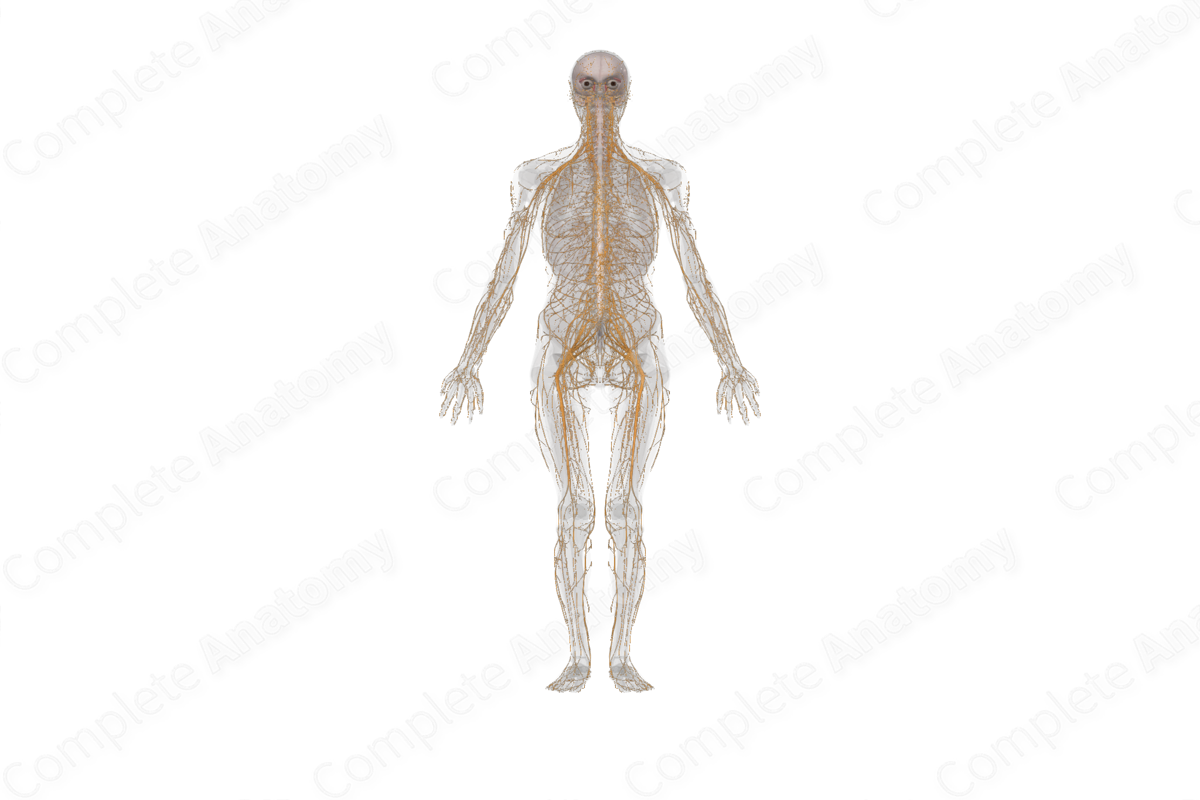
Description
The nervous system is composed of three parts including the central, peripheral, and enteric nervous system.
The central nervous system (CNS) refers to the brain and spinal cord. These structures develop from the neuroectoderm, a region of the dorsal midline ectoderm that folds in upon itself to form a neural tube. The spinal cord retains a tube-like structure, while the cells in the brain undergo massive proliferation, expanding and folding to form the cerebrum and brainstem (Lechan and Toni, 2016).
The peripheral nervous system (PNS) is composed of nerves outside of the central nervous system that communicate with the brain and spinal cord. It develops from the neural crest, a transient embryonic tissue that develops from the ectoderm, adjacent to the roof plate of the neural tube (Morris, 2007). These cells remain adjacent to the neural tube to form spinal ganglia or migrate to distant locations.
The PNS can also be subdivided into the somatic and autonomic branches. The somatic nervous system refers to those nerves which relate to conscious actions and sensations, such as touch, temperature, and proprioception. The autonomic nervous system acts on systems that do not reach consciousness. These include smooth muscle of arteries and sensory receptors of the viscera.
The enteric nervous system regulates gastrointestinal function. Traditionally, the enteric nervous system was considered to be a part of the autonomic nervous system; however, it is now generally defined as a separate system.
Related parts of the anatomy
References
Lechan, R. M. and Toni, R. (2016) 'Functional Anatomy of the Hypothalamus and Pituitary'.
Morris, P. (2007) Practical Neuroangiography. Lippincott Williams & Wilkins.
Learn more about this topic from other Elsevier products
Nervous system anatomy and physiology: Video, Causes, & Meaning

Nervous system anatomy and physiology: Symptoms, Causes, Videos & Quizzes | Learn Fast for Better Retention!




